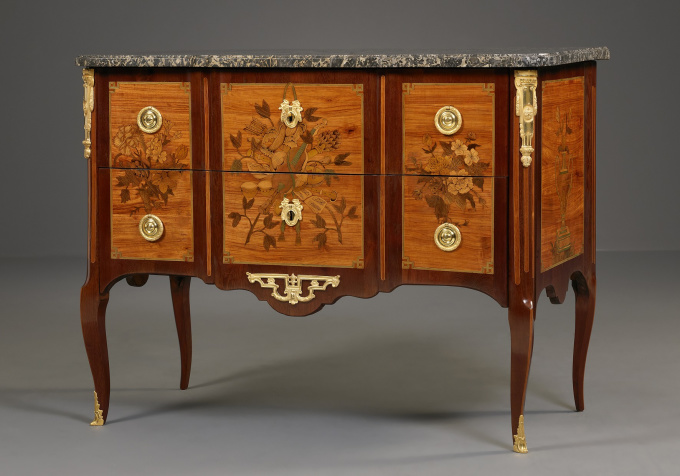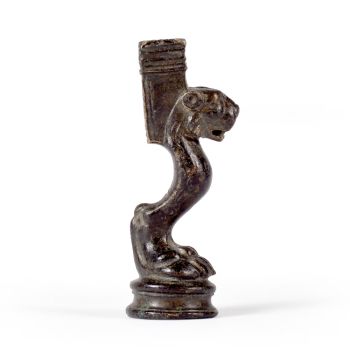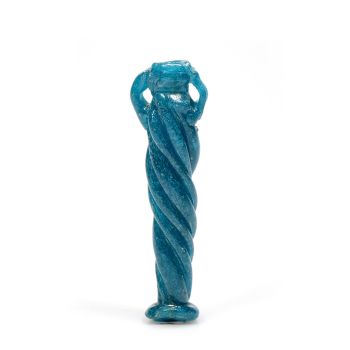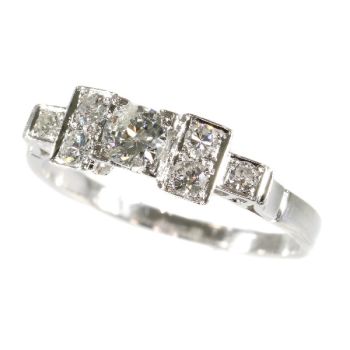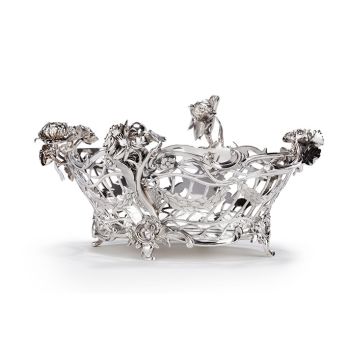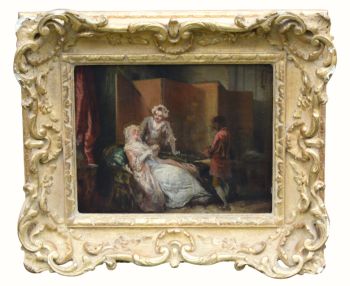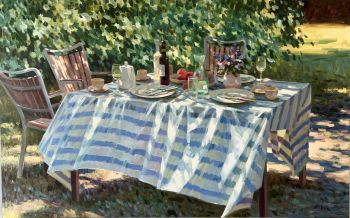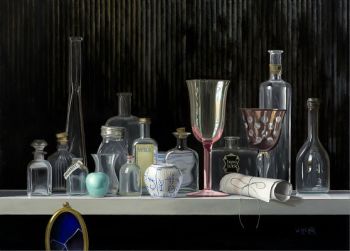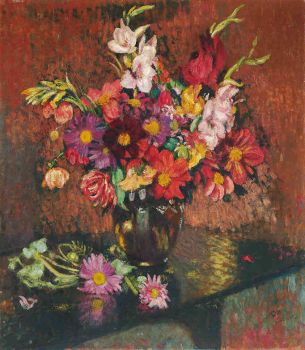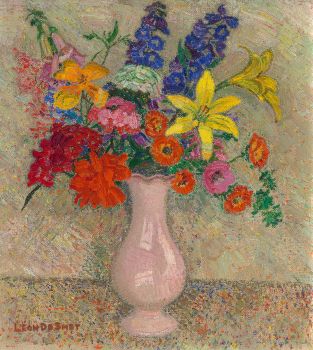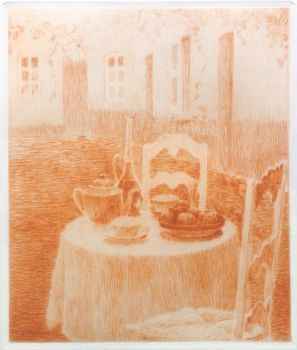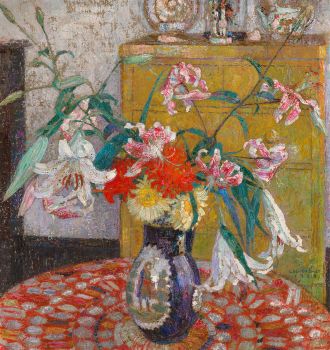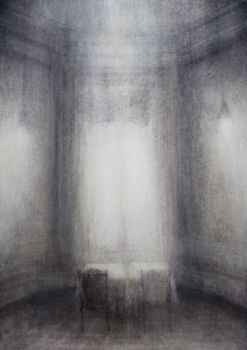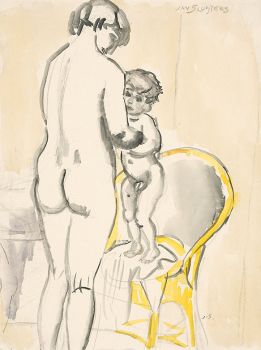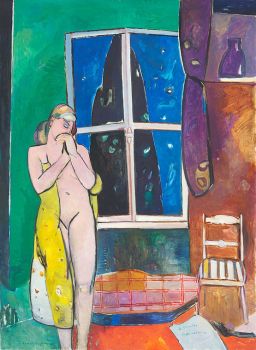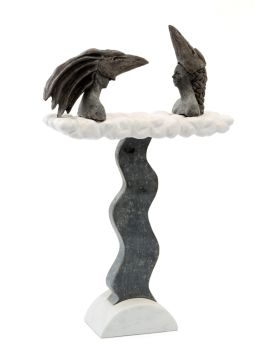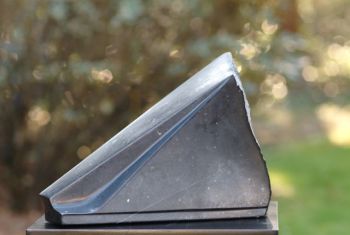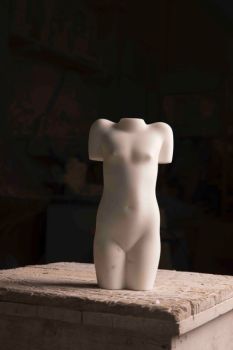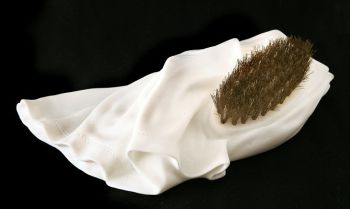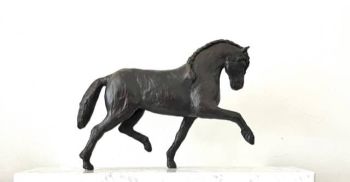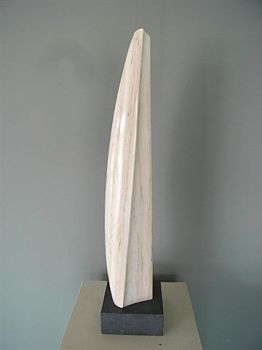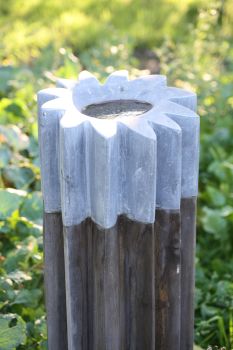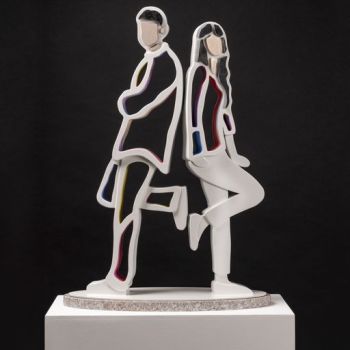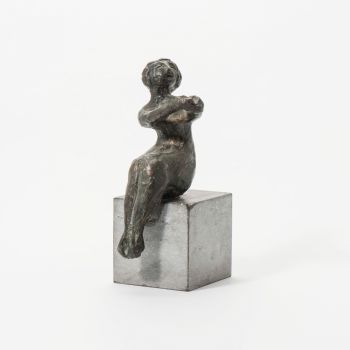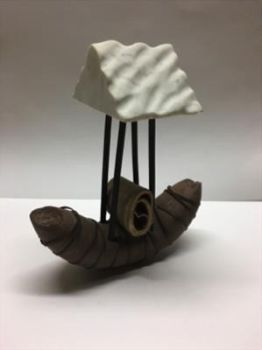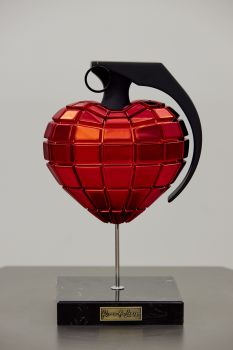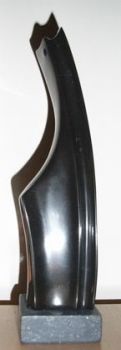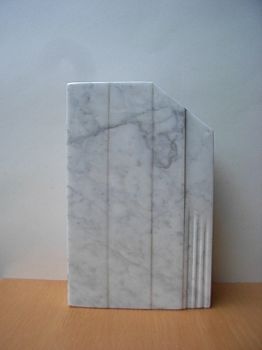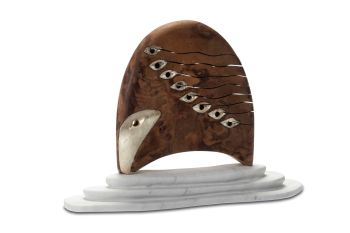French Transitional Commode 1770
Unknown artist
MarbleStoneWoodGrey MarbleOakRosewood
87 ⨯ 114 ⨯ 61 cm
Currently unavailable via Gallerease
- About the artworkThis is the signature of Jacques Bircklé (1734 – 1803) who became a “maïtre ébéniste” (master furniture maker) in 1764 and who also was a “Juré des Menuisiers-Ebénistes”: a Juror both of the Guild of Woodworkers and the Guild of Furniture makers.
Jacques Bircklé produced wonderfully varied and fashionable furniture, always of the highest quality. He was an exceptionally able marqueterie maker and used different sorts of wood and coloured wood to great effect. He frequently used light coloured woods on a darker ground and his themes: vases, flowers, garlands and music-trophy’s are usually surrounded by a Greek fret.
Bircklé used to work for members of the French Royal House: Queen Marie-Antoinette, Madame Elisabeth (the youngest sister of King Louis XVI and the Duke of Orléans. And to this day his work is to be found in the Palace of Versailles and the Petit Palais in Paris, as well as in the Museum of Decorative Arts in Paris.
The commode of Transition form with a breakfront, has two drawers. The four rounded off corners as well as the corners of the breakfront are decorated with marqueterie representing a fluted column. The front of the commode is divided into three panels, the sides contain one panel each. All panels are surrounded by Greek frets.
The middle panel on the front shows a music-trophy with a violin, several flutes, drums, a horn and a score. Added to the instruments and score are a quiver, a torch and two birds.
On the left and right of the front the marqueterie within the panels consists of bunches of flowers. Both on the right and left side of the commode, the marqueterie shows a plinth with a vase containing several flowers.
The marqueterie of the middle panel on the front is very similar to that on a commode illustrated in Kjellberg, Le mobilier français du XVIIIe siècle, Paris 2002, p. 77, ill. d.
Stamped: J*BIRCKLE JME. - About the artist
It might happen that an artist or maker is unknown.
Some works are not to be determined by whom it is made or it is made by (a group of) craftsmen. Examples are statues from the Ancient Time, furniture, mirroirs, or signatures that are not clear or readible but as well some works are not signed at all.
As well you can find the following description:
•“Attributed to ….” In their opinion probably a work by the artist, at least in part
•“Studio of ….” or “Workshop of” In their opinion a work executed in the studio or workshop of the artist, possibly under his supervision
•“Circle of ….” In their opinion a work of the period of the artist showing his influence, closely associated with the artist but not necessarily his pupil
•“Style of ….” or “Follower of ….” In their opinion a work executed in the artist’s style but not necessarily by a pupil; may be contemporary or nearly contemporary
•“Manner of ….” In their opinion a work in the style of the artist but of a later date
•“After ….” In their opinion a copy (of any date) of a work of the artist
•“Signed…”, “Dated….” or “Inscribed” In their opinion the work has been signed/dated/inscribed by the artist. The addition of a question mark indicates an element of doubt
•"With signature ….”, “With date ….”, “With inscription….” or “Bears signature/date/inscription” in their opinion the signature/ date/ inscription has been added by someone other than the artist
Artwork details
Related artworks
Unknown artist
AN UNUSUAL INDONESIAN LOBBED SILVER DISHlate 17th
Price on requestZebregs & Röell - Fine Art - Antiques
1 - 4 / 12Unknown artist
A Surinam-themed Amsterdam long-case clock1746 - 1756
Price on requestZebregs & Röell - Fine Art - Antiques
 Curated by
Curated byGallerease Magazine
1 - 4 / 17Unknown artist
The Stamford Raffles Secretaires.1800 - 1813
Price on requestZebregs & Röell - Fine Art - Antiques
Unknown artist
A SMALL IVORY NETSUKE OF A DUTCHMAN WITH A DRUM1750 - 1800
Price on requestZebregs & Röell - Fine Art - Antiques
1 - 4 / 24Unknown artist
A rare filigrana a retortoli goblet1550 - 1600
Price on requestPeter Korf de Gidts - Antiquairs
1 - 4 / 24- 1 - 4 / 24

